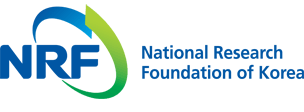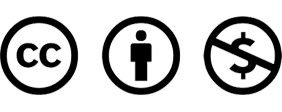Research Article
Al Jabri, H., M.H. Saleem, M. Rizwan, I. Hussain, K. Usman and M. Alsafran. 2022. Zinc oxide nanoparticles and their biosynthesis: overview. Life 12(4):594.
10.3390/life12040594An, M.W., S. Jeong, J.Y. Kim, H.J. Jo, T.I. Heo, H.J. Lee, E.W. Seo and S.Y. Chung. 2022. A flora of vascular plants of Seondalsan Mountain (Bonghwa-gun, Gyeongsanbuk-do). Korean J. Plant Res. 35(2):289-316 (in Korean).
Antoniadis, V., E. Levizou, S.M. Shaheen, Y.S. Ok, A. Sebastian, C. Baum, M.N.V. Prasad, W.W. Wenzel and J. Rinklebe. 2017. Trace elements in the soil-plant interface: Phytoavailability, translocation, and phytoremediation-A review. Earth Sci. Rev. 171:621-645.
10.1016/j.earscirev.2017.06.005Bazrafshan, E., L. Mohammadi, A. Ansari-Moghaddam and A.H. Mahvi. 2015. Heavy metals removal from aqueous environments by electrocoagulation process- a systematic review. J. Environ. Health Sci. Eng. 13:74.
10.1186/s40201-015-0233-8Bergqvist, C. and M. Greger. 2012. Arsenic accumulation and speciation in plants from different habitats. Appl. Geochem. 27(2):615-622.
10.1016/j.apgeochem.2011.12.009Bhat, S.A., O. Bashir, S.A.U. Haq, T. Amin, A. Rafiq, M. Ali, J.H.P. Américo-Oinheiro and F. Sher. 2022. Phytoremediation of heavy metals in soil and water: An eco-friendly, sustainable and multidisciplinary approach. Chemosphere 303:134788.
10.1016/j.chemosphere.2022.134788Blundell, T.L. and J.A. Jenkins. 1977. The binding of heavy metals to proteins. Chem. Soc. Rev. 6:139-171.
10.1039/cs9770600139Broadley, M.R., P.J. White, J.P. Hammond, I. Zelko and A. Lux. 2007. Zinc in plants. New Phytol. 173:677-702.
10.1111/j.1469-8137.2007.01996.xChun, S.J., Y.J. Kim, Y. Cui and K.H. Nam. 2021. Ecological network analysis reveals distinctive microbial modules associated with heavy metal contamination of abandoned mine soils in Korea. Environ. Poll. 289:117851.
10.1016/j.envpol.2021.117851Gall, J.E., R.S. Boyd and N. Rajakaruna. 2015. Transfer of heavy metals through terrestrial food webs: a review. Environ. Monit. Assess. 187:201.
10.1007/s10661-015-4436-3Ghori, N.H., T. Ghori, M.Q. Hayat, S.R. Imadi, A. Gul, V. Altay and M. Ozturk. 2019. Heavy metal stress and responses in plants. Int. J. Environ. Sci. Technol.16:1807-1828.
10.1007/s13762-019-02215-8Giannis, A. and E. Gidarakos. 2005. Washing enhanced electrokinetic remediation for removal cadmium from real contaminated soil. J. Hazard. Mater. 123:165-175.
10.1016/j.jhazmat.2005.03.050Guo, J., X. Dai, W. Xu and M. Ma. 2008. Overexpressing GSH1 and AsPCS1 simultaneously increases the tolerance and accumulation of cadmium and arsenic in Arabidopsis thaliana. Chemosphere 72:1020-1026.
10.1016/j.chemosphere.2008.04.018Hänsch, R. and R.R. Mende. 2009. Physiological functions of mineral micronutrients (Cu, Zn, Mn, Fe, Mo, B, Cl). Curr. Opin. Plant Biol. 12:259-266.
10.1016/j.pbi.2009.05.006Hossain, M.A., P. Piyatida, J.A.T. Silva and M. Fujita. 2012. Molecular mechanism of heavy metal toxicity and tolerance in plants: central role of glutathione in detoxifcation of reactive oxygen species and methylglyoxal and in heavy metal chelation. J Bot. 012:1-37.
10.1155/2012/872875January, M.C., T.J. Cutright, H.W. Keulen and R. Wei. 2008. Hydroponic phytoremediation of Cd, Cr, Ni, As, and Fe: Can Helianthus annuus hyperaccumulate multiple heavy metals? Chemosphere 70:531-537.
10.1016/j.chemosphere.2007.06.066Jeyakumar, P., C. Debnath, R. Vijayaraghavan and M. Muthuraj. 2023. Trends in bioremediation of heavy metal contaminations. Environ. Eng. Res. 28(4):220631.
10.4491/eer.2021.631Kandziora-Ciupa, M., R. Ciepał, A. Nadgórska-Socha and G. Barczyk. 2013. A comparative study of heavy metal accumulation and antioxidant responses in Vaccinium myrtillus L. leaves in polluted and non-polluted areas. Environ. Sci. Pollut. Res. 20:4920-4932.
10.1007/s11356-012-1461-4KBCH 2024. Korea Biosafety Clearing House: Daejeon, Korea. Available online: https://www.biosafety.or.kr Accessed 10 June 2024
KMA 2024. Synoptic Weather Observation, Statistics by Condition. 2024. https://data.kma.go.kr Accessed 10 June 2024
Kwon, H.J., C.H. Lee and S.Y. Kim. 2019. Heavy metals uptake capability and growth of fifteen compositae plants for phytoremediation. Korean J. Plant Res. 32:1-8 (in Korean).
Leong, Y.K. and J.S. Chang. 2020. Bioremediation of heavy metals using microalgae: Recent advances and mechanisms. Bioresour. Technol.303:122886.
10.1016/j.biortech.2020.122886Mani, D. and C. Kumar. 2014. Biotechnological advances in bioremediation of heavy metals contaminated ecosystems: an overview with special reference to phytoremediation. Int. J. Environ. Sci. Technol. 11:843-872.
10.1007/s13762-013-0299-8Martínez, M., P. Bernal, C. Almela, D. Vélez, P. Garcı'a-Agustín, R. Serrano and J. Navarro-Aviñó. 2006. An engineered plant that accumulates higher levels of heavy metals than Thlaspi caerulescens, with yields of 100 times more biomass in mine soils. Chemophere 64:478-485.
10.1016/j.chemosphere.2005.10.044Matlock, M.M., B.S., Howerton, D.A. Atwood, 2002. Chemical precipitation of heavy metals from acid mine drainage. Water Res. 36:4757-4764.
10.1016/S0043-1354(02)00149-5NIAST. 2000. Methods of Soil and Plant Analysis. National Institute of Agricultural Sciences and Technology, Suwon, Korea. (in Korean).
Nam, K.H., S.M. Han, J.R. Lee, J.H. Park, W. Choi, Y.J. Jung, D.W. Kim, H.S. Lim, S.H. Yoo, I.L. Kim and M.A. Seol. 2019. Establishment of LMO Risk Assessment System and Operation of the Institute of LMO Risk Assessment under the Jurisdiction of the Ministry of Environment; National Institute of Ecology: Seocheon-gun, Korea. pp. 1-230 (in Korean).
Nejad, Z.D., M.C. Jung and K.H. Kim. 2018. Remediation of soils contaminated with heavy metals with an emphasis on immobilization technology. Environ. Geochem. Health 40:927-953.
10.1007/s10653-017-9964-zPais, I. and J.B Jones Jr. 1997. The Handbook of Trace Elements. St. Lucie Press, Boca Raton, FL (USA). pp. 1-221.
Qin, S., H. Liu, Z. Nie, Z. Rengel, W. Gao, C. Li and P. Zhao. 2020. Toxicity of cadmium and its competition with mineral nutrients for uptake by plants: A review. Pedosphere 30:168-180.
10.1016/S1002-0160(20)60002-9Rahman, Z. and V.P. Singh. 2019. The relative impact of toxic heavy metals (arsenic, cadmium, chromium (VI), mercury, and lead) on the total environment: an overview. Environ. Monit. Assess. 191:419.
10.1007/s10661-019-7528-7Rahman, Z. and V.P. Singh. 2020. Bioremediation of toxic heavy metals (THMs) contaminated sites: concepts, applications and challenges. Environ. Sci. Pollut. Res. 27: 27563-27581.
10.1007/s11356-020-08903-0Rengel, Z., J. Bose, Q. Chen and B.N. Tripathi. 2015. Magnesium alleviates plant toxicity of aluminium and heavy metals. Crop Pasture Sci. 66:1298-1307.
10.1071/CP15284Rugh, C.L., J.F. Senecoff, R.B. Meagher and S.A. Merkle. 1998. Development of transgenic yellow poplar for mercury phytoremediation. Nat. Biotechnol. 16:925-928.
10.1038/nbt1098-925Shen, X., M. Dai, J. Yang, L. Sun, X. Tan, C. Peng, I. Ali and I. Naz. 2022. A critical review on the phytoremediation of heavy metals from environment: Performance and challenges. Chemosphere 291(3):132979.
10.1016/j.chemosphere.2021.132979Tester, M. and R. Davenport. 2003. Na+ tolerance and Na+ transport in higher plants. Ann. Bot. 91:503-927.
10.1093/aob/mcg058Whalen, J.K., N. Ziadi, J.J. Schoenau, M.C. Paré, D.L. Burton and T. Bruulsema. 2021. Soil nutrient cycling. Digging into Canadian Soils. https://openpress.usask.ca/soilscience/chapter/soil-nutrient-cycling/
- Publisher :The Plant Resources Society of Korea
- Publisher(Ko) :한국자원식물학회
- Journal Title :Korean Journal of Plant Resources
- Journal Title(Ko) :한국자원식물학회지
- Volume : 37
- No :5
- Pages :537-546
- Received Date : 2024-06-18
- Revised Date : 2024-08-09
- Accepted Date : 2024-08-10
- DOI :https://doi.org/10.7732/kjpr.2024.37.5.537




 Korean Journal of Plant Resources
Korean Journal of Plant Resources







